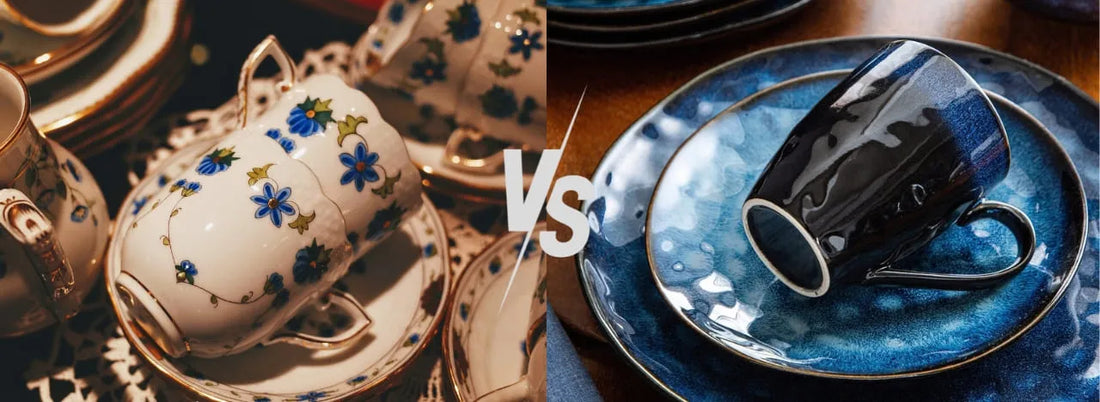
Classic vs. modern ceramic designs: a style comparison
Share
Classic vs. Modern Ceramic Designs: A Style Comparison
The world of ceramics is as old as civilization itself. Ceramic objects have been with us for thousands of years, from functional everyday objects to works of art that reflect the spirit of the times. But what characterizes classic ceramics and how does it differ from modern designs? This comprehensive style comparison gives you an insight into the development and change of ceramics from antiquity to the present day.
The characteristics of classic ceramic designs
Traditional ceramic designs are strongly influenced by historical techniques and materials. The most famous classical ceramics include Greek vases , which often feature black and red geometric patterns, or Chinese porcelain , which delights with its intricate blue patterns. These pieces often reflect cultural and religious motifs and are designed for functionality, e.g. as storage vessels or drinking vessels.
Typical features:
- Symmetrical shapes
- Hand-painted ornaments
- Natural clay colors and earthy glazes
- Functional Designs
Classic ceramics rely on traditional craft techniques that have been passed down through generations. The pieces are often unique and reflect the artist's craftsmanship and dedication.
Modern ceramic designs: minimalism meets innovation
Modern ceramic designs stand out from traditional styles through their reduction and the use of new materials and techniques. Nowadays, industrial manufacturing processes are often used, paving the way for innovative shapes and colors. Aesthetics often take precedence over functionality.
Typical features:
- Asymmetrical and unconventional shapes
- Bold colors and glazes
- Minimalist and abstract designs
- Mix of traditional and new materials (e.g. ceramic combined with metal or glass)
A major trend in modern ceramics is Scandinavian minimalism , which is characterized by clean lines, simple shapes and neutral colors. Modern pieces tend to be viewed as art objects rather than functional items. Another aspect of modern ceramics is the fusion of handcraft and industrial production, as shown by Design & Ceramics .
Classic and modern designs in direct comparison
| feature | Classic ceramics | Modern Ceramics |
|---|---|---|
| shaping | Symmetrical, functional | Asymmetric, often experimental |
| Color | Natural tones, earthy colors | Bright, bold colors and glazes |
| Technology | handmade, often unique pieces | mix of handcraft and industrial production |
| use | Functional (tableware, vases) | Often decorative, art objects |
The Return to Craftsmanship: Classical Elements in Modern Ceramics
Although modern ceramic designs are often experimental and avant-garde, many artists are inspired by classic techniques and styles. The trend towards handmade ceramics in the modern design world is a sign that old techniques are reviving. More and more modern ceramicists are turning to traditional methods to give their pieces an authentic touch .
Conclusion
Classic and modern ceramic designs differ greatly in their aesthetics and functionality. While traditional ceramics rely on craftsmanship and functionality, modern designs experiment with new shapes, colors and materials. But despite the differences, there is a lot of overlap, as modern artists often draw on classic techniques to enrich their works. Whether you prefer classic or modern ceramics, the art form remains timeless and is constantly evolving.
Check out our new products range to discover the latest ceramic trends!
